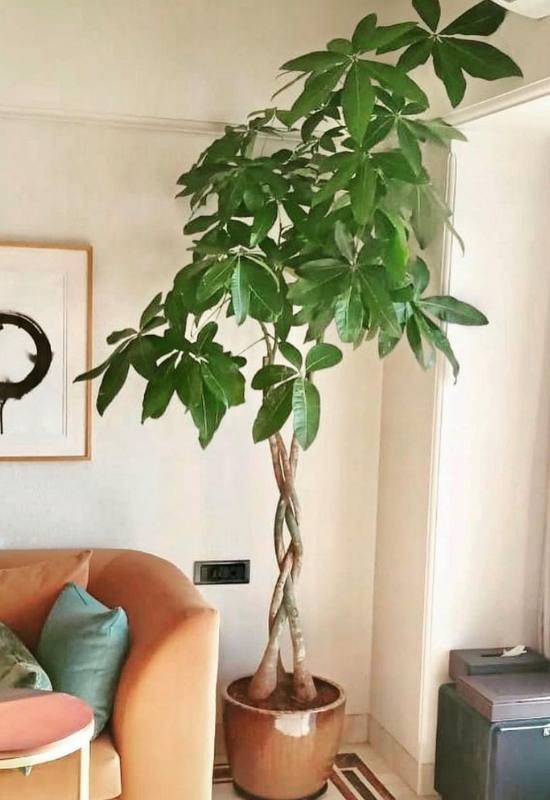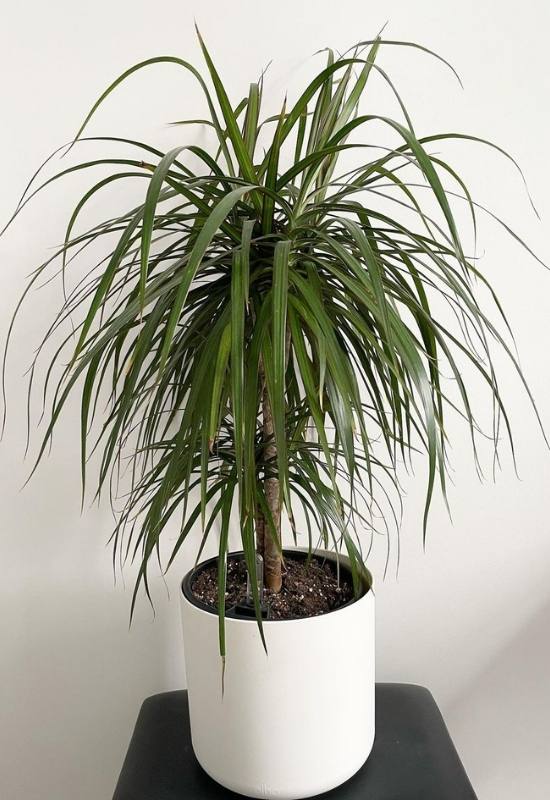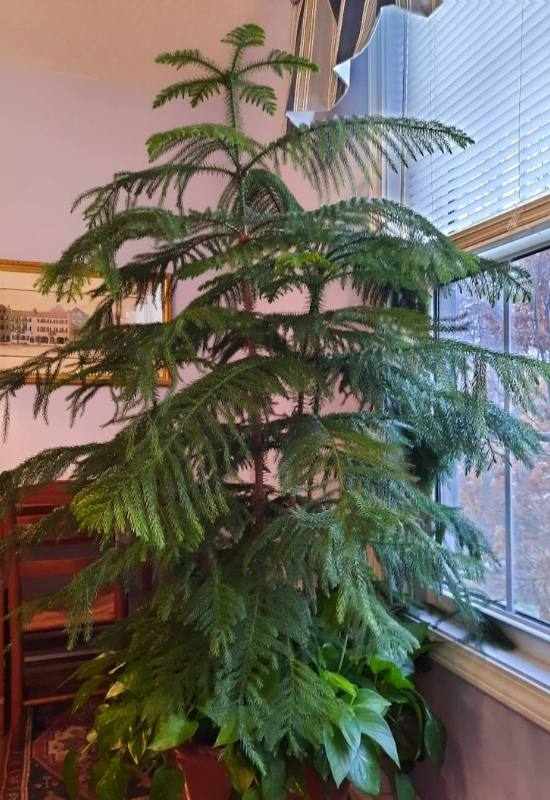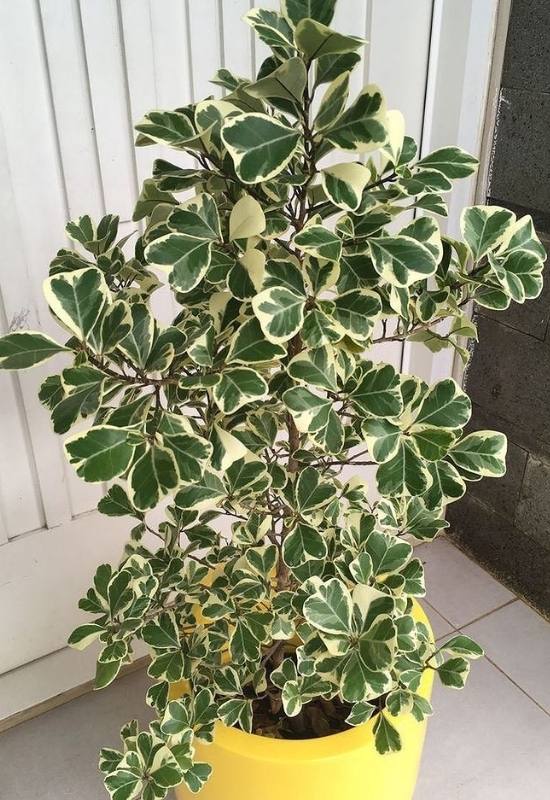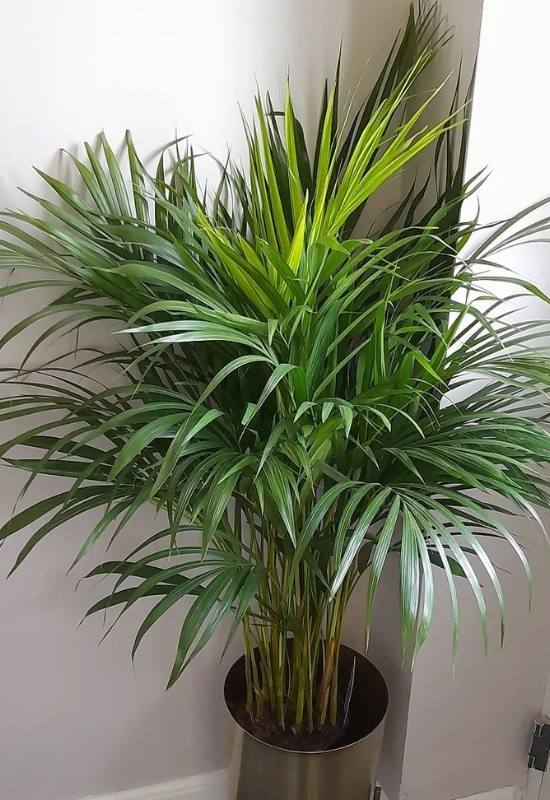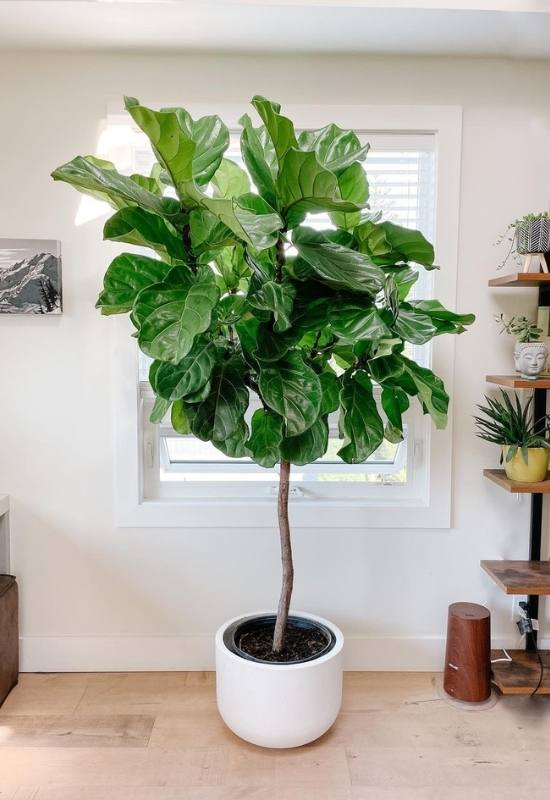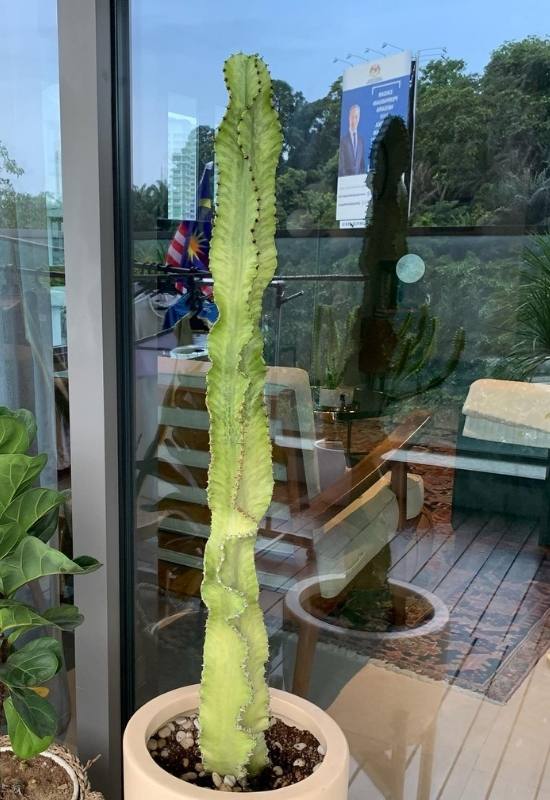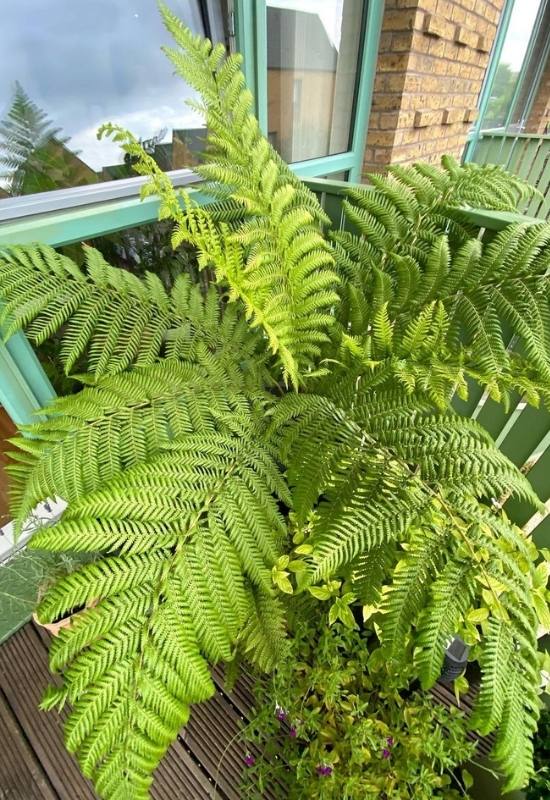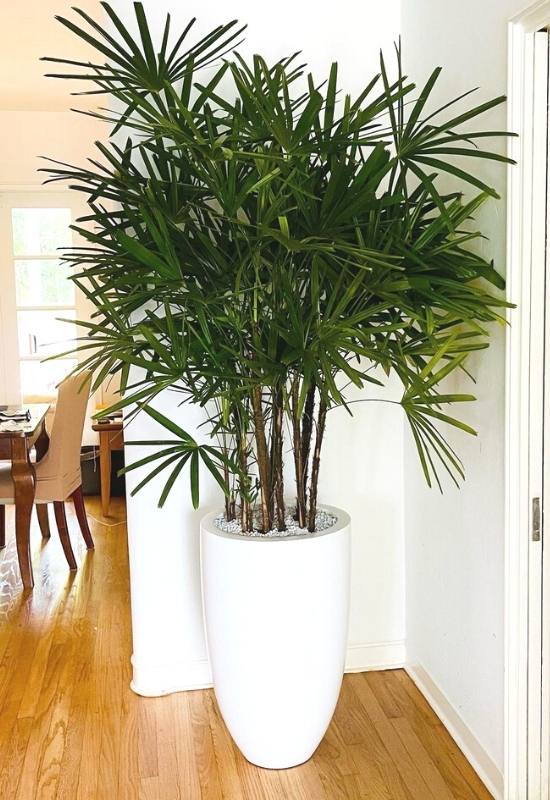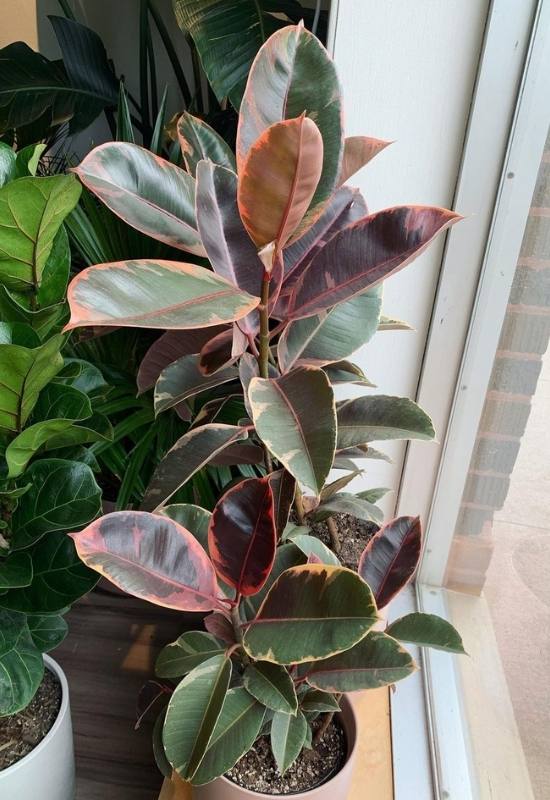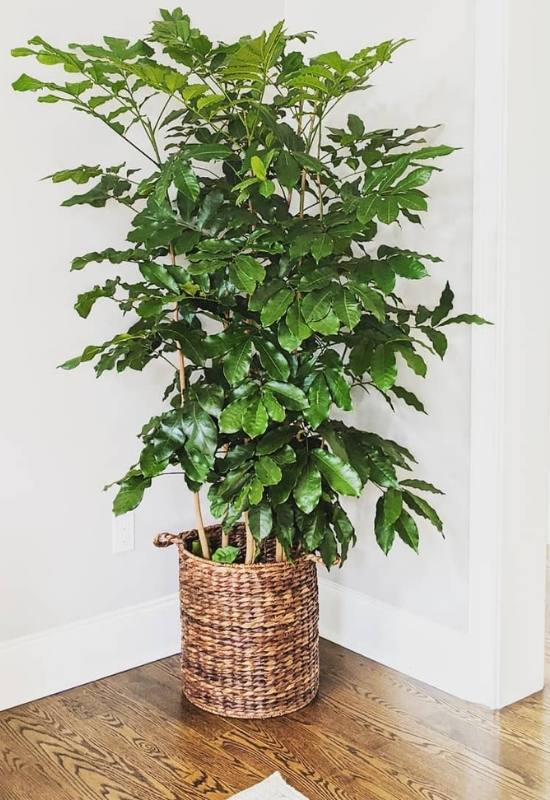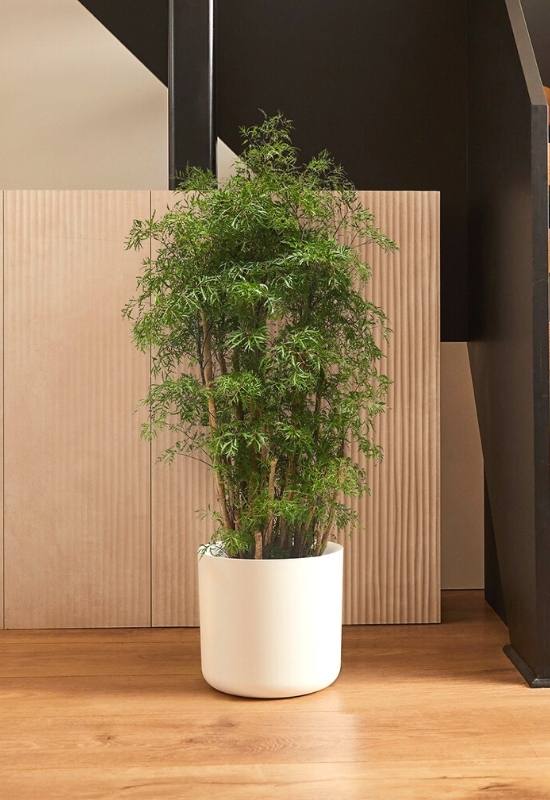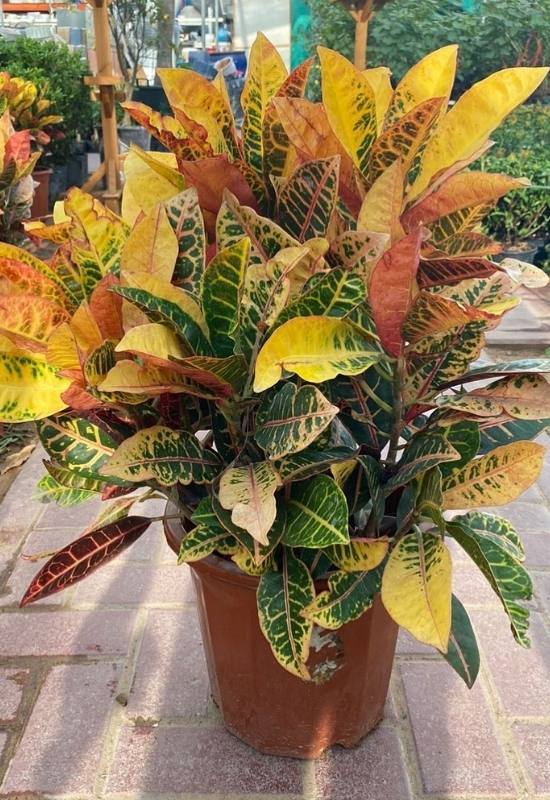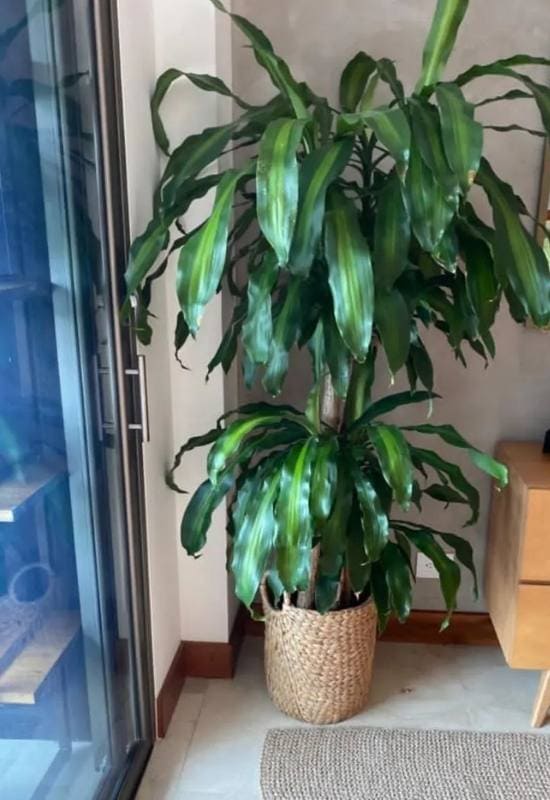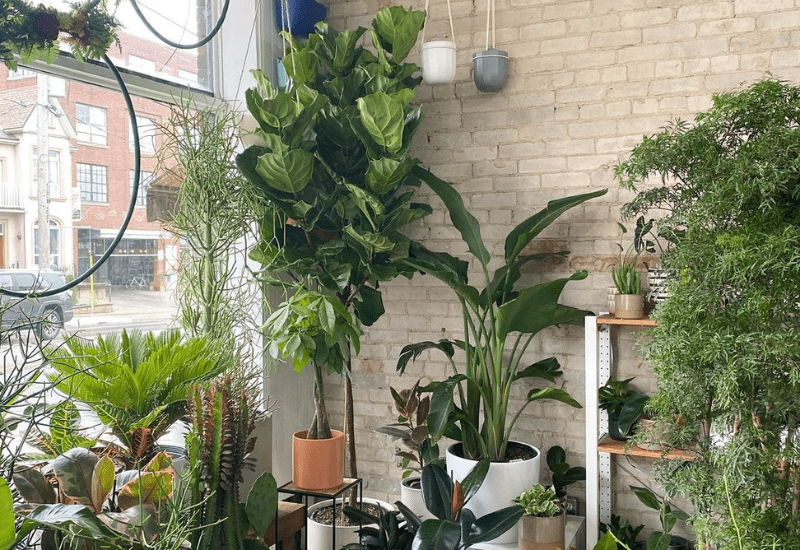
Houseplants that grow tall bring vertical dimension or accent to your indoor spaces,
reaching and surpassing eye level with showy, or finely textured foliage and sometimes flowers as well!
Sometimes they may even touch the ceiling, making a bold statement and
lifting even the dullest room to new heights of beauty and décor…
Sculptural like rubber plant or unusual and like triangle fig tree or Ming aralia, columnar, pyramidal or even shaped as an umbrella, the crowns of these small trees and plants will rise above your tables, chairs and even cupboards.
Basically, you can have the canopy of a small forest, even tropical, in a fairly small living room or office!
So whatever you are looking for a tall, slender girl on the floor near the sofa, in a corner of your living room, in your entrance halls or in front of the window, there is bound to be one (or more) tree-like houseplants that will best complement your décor and your state of mind!
Our large, easy-care indoor plants or not very demanding indoor trees are waiting for you, shall we introduce you?
14 Tall Houseplants That’ll Add Some Umph To Your Home
Reaching up to your ceiling, or at least your head, these are 12 houseplants with different looks and personalities. And we can see one that brings you good luck as well!
1: Money Tree (Pachira aquatica)
Traditionally grown for good fortune in Chinese farms, the money tree will reach high towards your ceiling (8 feet or 2.4 meters), usually with an upright and braided trunk, and then spread its leaves above your head like an indoor tree.
This plant’s leaves are large, osmotic, and bright green. They’re palmate–like horse chestnuts–and have 5 to 9 elliptical leaflets that can each grow up to 10 inches long (25 cm). This plant is also very showy and calming.
It can reach 30 feet in height (9 meters) outdoors, but indoors it will stay shorter.
When blooms Rarely come, they are outdoor and unique; They have up to 250 red stakes each and are greenish-yellow to white! The money tree is famous for its bright, open look that goes well in a tidy room with elegant lighting.
Paint the wall behind it with light neutral colors for the best effect. Not only does it look good, but the money tree also purifies air quality.
2: Dragon Tree (Dracaena marginata)
Everything in the dragon tree points upwards; with a straight, upright trunk that looks wrapped in brown paper, this native of Madagascar can grow to feet outdoors (6.0 meters) but slowly, and it will keep under your ceiling indoors.
The branches that stem off it, too, grow almost vertically, and then tufts of rugged, sharp looking, long and thin, pointed foliage complete the effect.
The leaves are bright green with reddish margins, again primarily pointing to the sky, but with some widening to the sides as well.
The overall effect is exquisite and with neat, precise lines. It rarely blooms indoors, but the flowers are pretty and white if it does.
The dragon tree is solid and easy to care for houseplant, viral indeed, and suitable even for a minimalist look thanks to its slender elegance.
3: Norfolk Island Pine (Araucaria heterophylla)
For a refined and lacy look, Norfolk Island pine, with its upright trunk and delicate foliage, is perfect indoors! This conifer grows into concave conical shapes with regular, layered branches that look like fans and have needles pointing up above them; on the whole, they like soft green artistic brushes with bristles turned upwards.
While outdoors, it can become a real giant, casting its elegant silhouette against the sky; it is also kept as a houseplant, where it looks like a stylized, very symmetrical Christmas tree with a very, very fine texture. The large, round, green cones that look like pineapples add a decorative touch.
Keep Norfolk Island pine in a cool place during summer if you want to grow it indoors, or it may lose its needles under 68o F (20o C). Besides this, you can enjoy its evergreen foliage and elegant branching all year round!
4: Triangle Ficus (Focus triangularis)
From South Africa to your living room or office, triangular focus can grow to above your head and bring its intriguing foliage to eye level, as it touches 8 feet tall (2.4 meters)… With slender trunk and branches, it is also easy to train it to be very upright, and these elegantly leave center stage to the real protagonists…
The heart-shaped leaves are attached to the petioles from their thin end in an unusual twist. And they fill indoor spaces with their glossy variegation of mid to dark green and cream white margins. The effect is that of many butterflies fluttering on thin stems, quite a sight indeed!
Although the Triangle Ficus is lesser known than the more famous Ficus Benjamina, it has many advantages, such as not continuously dropping leaves and having much more exciting foliage…
5: Parlor Palm (Chamaedorea elegans)
Parlor palm sends its finely segmented, bright to mid-green fronds high up into the upper layers of rooms and indoor spaces, about 6 feet in the air (1.8 meters).
Fresh looking and exotic at the same time, this native of rainforests in Southern Mexico and Guatemala is a tropical variety that can brighten up your days and home.
Each leaf is divided into many small, opposite segments that arch beautifully from long and green petioles, like a tropical fern.
And it also brings something more to your household: it is also called fortune palm because it brings good luck.
Very easy to grow, parlor palm has low demands on you in terms of maintenance, and it provides a reliable and constant presence with the delicate texture of its beautiful leaves.
6: Fiddle Leaf Fig (Ficus lyrata)
If you are interested in a houseplant that grows tall and also makes a bold statement for your indoor places, the fiddle leaf fig is your man! With a very upright but slender trunk, it’s ample, almost oversized foliage will be impossible to miss!
In fact, the leaves reach a whopping 18 inches long (45 cm), and they are almost equally as broad, bright green, and relatively irregular in shape, though they look a bit like violins, as the name suggests.
You don’t need many to brighten up your home or office, and the exotic personality of beauty from western Africa is both lush and luxurious.
So with fiddle leaf ficus, you can have a tropical corner even if you live very far from these exotic places; just keep it warm in winter though.
7: Candelabra Spurge (Euphorbia ammak)
Candelabra spurge is a tall, exotic succulent houseplant from Yemen and Saudi Arabia, 20 feet tall as an outdoor plant (6.0 meters), and half as much indoors.
The trunk is short, but the branches are very upright, pointing straight up to the ceiling; these are divided into four wings with deep lobes, and the ribs are very wavy and irregular.
While it is usually green, there is also a variegated variety with a marbled, cream-yellow, and pale blue surface. Both are prickly, though, so be careful!
You do get a few tiny leaves on top of the arms of this giant and even a few yellow-green flowers with a very bright color!
Fast-growing candelabra spurge is an excellent idea to have a vertical and unusual living sculpture both indoors and outdoors.
8: Tree Fern (Cyathea cooperi)
Most tree ferns are outdoor plants, but not this variety we have chosen for you, Cyathea cooperi, which can reach the ceiling of your room with its very, very delicate looking foliage (10 feet, or 3.0 meters, easily).
Coming all the way from Australia, it boasts an upright trunk with a dark brown fibrous coat, and then the branches open straight outwards, like slender rays of an umbrella, bearing fronds of bright green, bipinnate, with the delicate texture of filigree! Really impressive, these can become an indoor, fresh-looking, and exotic parasol!
This tree fern has a very ancient, prehistoric look; it is the sort of plant you would expect in a land of dinosaurs and pterodactyls…
Surely you can see why it is valuable as a houseplant and why the Royal Horticultural Society has given it the Award of Garden Merit.
9: Lady Palm (Rhapis excelsa)
Long, thin bamboo-like canes bring the foliage of a lady’s palm to the top of your room, no matter how high the ceiling is, as it can reach 15 feet tall (4.5 meters) if it has space.
The mid-green fronds are fan-shaped and arch beautifully from this small tree from China and Vietnam.
Each leaf is divided into 5 to 10 narrow and long lobes, reaching 20 inches across (50 cm). Slow growing and easy to grow, this exotic beauty gives you that tropical beach looks, even if you are miles and miles away from the sea. Maybe this is why it has received the Award of Garden Merit from the Royal Horticultural Society.
You can even get small panicles of yellow flowers hanging between the broad leaves of a lady’s palm, even if its main asset for your indoor spaces is its foliage.
10: Rubber Plant (Ficus elastica)
In their natural habitat, rubber plants (or rubber trees/figs) can grow to an impressive 100 feet tall (30 meters). However, if you’re keeping them in your home or office, they will usually stay just below the ceiling. Fortunately, it is easy to train and prune these plants.
The popular houseplant gets its name from its foliage, which has a straight, upright trunk with soft-looking branches. The oval, leathery, and glossy dark green leaves have a “gummy” texture, and sometimes they can also be dark purple.
The rubber plant’s vibrant red buds provide a colorful contrast. They can grow up to 15 inches (35 cm) long, but older specimens are smaller.
As indoor spaces often lack texture and depth, which is why the rubber plant is so popular as a houseplant. It requires little maintenance and rarely has any health problems.
11: Natal Mahogany Tree (Trichilia emetica)
The Natal mahogany tree is yet another exotic outdoor giant, but you can keep it to under 10 feet indoors (3.0 meters), which is why it is an excellent tall houseplant.
The leaves are elongated, broad, and pinnate with many oval leaflets. They are very glossy to the point of appearing wet, deep green in color, with clear, regular veins throughout.
This fruit tree’s beautiful, florid crown is reminiscent of its homeland’s forests, tropical Africa. Though blooms are rare indoors, with a little effort, they are not impossible to come by; when they bloom, the flowers are lime green in color! They produce gleaming orange fruits after flowering.
The Natal mahogany tree is perfect for filling space with lush foliage; the rainforest look of this exotic houseplant is tough to match!
12: Ming Aralia (Polyscias fruticosa)
Lesser known as a houseplant, Ming aralia is an upright columnar small evergreen tree from India with fantastic foliage and a bright future in indoor décor!
Often multi-trunked but upright in habit, it bears its dense, deeply lobed, and intricate foliage with extreme elegance, giving you a fresh, sophisticated, and finely textured canopy of mid-green leaves. There are variegated varieties as well, with different shades of green and cream.
The leaves droop gently from the branches, giving you a soft and delicate effect. Blooms are dark yellow, waxy, and small, but still very pretty and perfectly match the personality of this plant.
Evergreen and exotic while also very unusual, Ming aralia is the perfect tall houseplant if you want to add lots of texture and foliage to your living room or office.
13: Croton (Codiaeum variegatum)
Reaching just about the height of an average ceiling, 10 feet tall (3.0 meters), croton also has some of the most colorful foliage you can grow indoors.
With broad, leathery, and very glossy variegated leaves, it has a dramatic quality and a range of colors that alternate following the regular, arch-shaped veins.
Green in different shades, with yellow, orange, red, and purple, even dark, offer a palette worthy of a professional artist.
It’s like Carnival all year round with this exotic wonder from Malaysia, Australia, and the Pacific Ocean… Clusters of little white or lime flowers may even appear at any time of the year.
One of the most loved houseplants of all time, croton has been a colorful companion in indoor spaces for a very long time now; while its luck has been on the fade in recent years, it is still one of the most intriguing tall plants ever!
14: Corn Plant (Dracaena fragrans)
Corn plants will grow well above your roof in the wild, up to 50 feet (15 meters), but it grows slowly, and in containers, it rarely exceeds 6 feet in height (1.8 meters).
Still, quite tall and, what is more, with emerald green, glossy foliage that forms very lush tufts like little exotic palms.
As the name suggests, the foliage looks like that of corn, but it has a much more exotic and decorative quality.
Coming on upright and slender trunks, it can also be variegated, often with yellow or cream stripes highlighting the length and shape of the leaves.
However, you will have to wait for the white or rose clusters of tiny flowers because it will not bloom till it is 5 to 10 years old.
The corn plant is both elegant and exotic, coming from Africa with its shiny beauty and its low maintenance need, making it a perfect, tall houseplant with an air of permanence for indoor spaces.
Final Thoughts
Now that you know a little more about some of the most famous tall indoor plants, which one will you choose to adopt? Each plant has its own unique personality, so take your time getting to know them before making your final decision.
Once you bring your new plant baby home, be sure to give it plenty of Love and care while it adjusts to its new environment. With proper care, your tall indoor plant will thrive and fill your space with greenery for years to come! Happy Planting!

Written By
Amber Noyes
Amber Noyes was born and raised in a suburban California town, San Mateo. She holds a master’s degree in horticulture from the University of California as well as a BS in Biology from the University of San Francisco. With experience working on an organic farm, water conservation research, farmers’ markets, and plant nursery, she understands what makes plants thrive and how we can better understand the connection between microclimate and plant health. When she’s not on the land, Amber loves informing people of new ideas/things related to gardening, especially organic gardening, houseplants, and growing plants in a small space.

